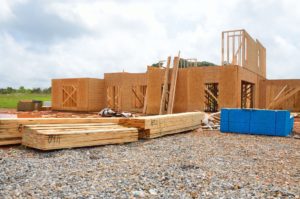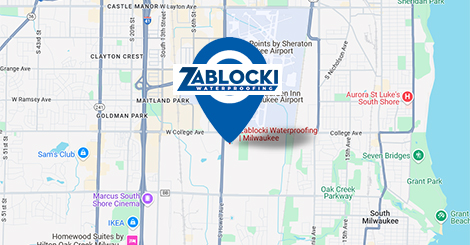 Homes are built from the ground up. This fundamental principle of new home construction means that certain elements of a new home are constructed and secured before others. For example, you wouldn’t run the electrical wiring before the wall framing is in place. Similarly, you wouldn’t want to install your basement waterproofing system after the foundation is laid and you have moved on to other, above-ground construction elements.
Homes are built from the ground up. This fundamental principle of new home construction means that certain elements of a new home are constructed and secured before others. For example, you wouldn’t run the electrical wiring before the wall framing is in place. Similarly, you wouldn’t want to install your basement waterproofing system after the foundation is laid and you have moved on to other, above-ground construction elements.
Basement waterproofing is an essential component of new home construction that, when properly installed, you’ll never know is there. Drain tile is the technical term for contemporary residential basement waterproofing. If you are in the process of embarking on a new home construction journey, this article is for you. To learn more about what drain tile is and how it’s installed, read on.
What is drain tile?
Drain tile is a misleading name; there is no tile (as we understand it) involved in this basement waterproofing system. Instead, drain tile is composed of a network of flexible or rigid PVC piping that is laid underground around a home’s foundation. This PVC piping is porous on one side and allows water to enter the piping and travel away from the home to a point of egress a safe distance away.
If the slope around your home is sufficiently steep, you can count on gravity to carry this unwanted groundwater through the drain tile system and away from the home. If the land surrounding your property is flat or slopes toward the home, a sump pump system will collect and move the water away.
How is drain tile installed?
Drain tile systems on current residential construction projects are typically installed right after the foundation footer is laid down and prior to any further construction.
To install, a five or six-inch trench is dug alongside the foundation footer, into which the drain tile piping is laid. After this, around three feet of gravel is laid on top of the piping. These pieces of gravel are too large to enter the porous PVC piping, yet provide an excellent natural filtration system for groundwater entering the drain tile. This gravel reduces the likelihood of soil particles and other sediment entering the drain tile and causing issues such as clogging. A porous fabric such as landscaping cloth or roofing felt is then laid on top of the gravel, providing yet another layer of filtration. A sufficient amount of soil is then laid on top of the fabric, completing the drain tile installation.
Should you install drain tile on your new construction?
Thankfully, most municipal building codes make that choice for you and require drain tile installation around any concrete or stone foundations that include any kind of usable or habitable square footage underground (e.g. basements or crawl spaces). Even if you happen to live in an area that is exempt from this basement waterproofing requirement, it is hard to imagine a scenario in which a responsible new homeowner wouldn’t want the peace of mind that only a basement waterproofing system such as drain tile can provide.
What if your home is not new construction?
If you’re already a homeowner, as you consider everything you have learned about drain tile thus far you may be wondering if you can add a basement waterproofing system such as this to your current home. The answer is yes. The cost of materials will vary depending on the overall perimeter of the home and whether or not gravity or a sump pump will do the work. Be aware, the labor involved to retrofit drain tile around the exterior of your home is quite extensive and therefore costly. Another option for existing homeowners is to create a drain tile system around the interior of the current basement. This option also comes with a significant financial cost for similar reasons but is still cheaper than dealing with the ongoing issues caused by a home with a nonexistent or malfunctioning drainage system.
Whether embarking on new construction or considering a waterproofing upgrade for your existing home, the team at Zablocki is here to help. We are drain tile experts and proud to provide basement waterproofing and foundation repair services to clients across Milwaukee and Waukesha counties. Give us a call to get started today.





